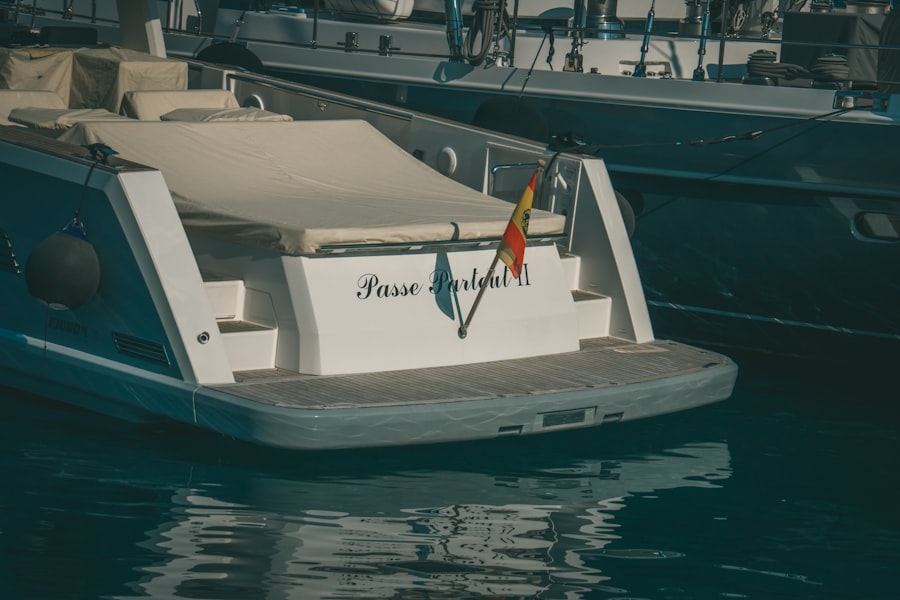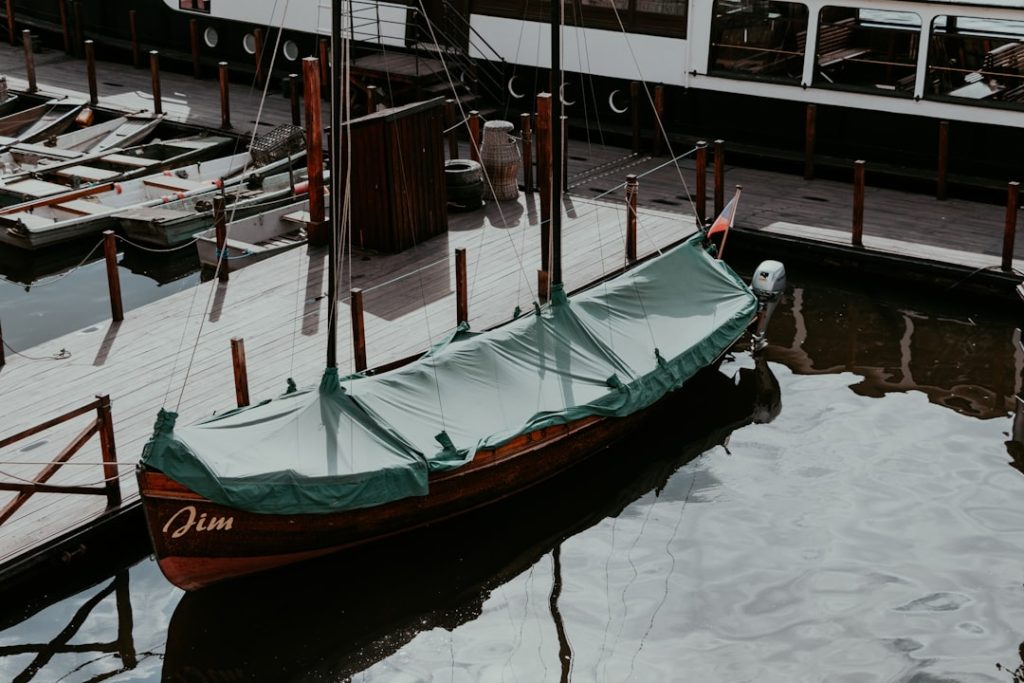Vintage boats possess a unique charm that transcends time, captivating enthusiasts and casual observers alike. Their allure lies not only in their aesthetic appeal but also in the stories they carry, echoing the craftsmanship and innovation of their respective eras. Each vintage vessel is a testament to the maritime history, reflecting the cultural and technological advancements of the time it was built.
From elegant wooden yachts to robust fishing boats, these vessels evoke a sense of nostalgia that resonates deeply with those who appreciate the artistry of boat building. The fascination with vintage boats is often rooted in a longing for simpler times, when craftsmanship was paramount, and each boat was a labor of love. The materials used, such as mahogany, teak, and oak, were chosen not just for their durability but also for their beauty.
The rich grains and warm hues of these woods tell a story of nature’s artistry, while the meticulous construction methods employed by skilled artisans highlight a dedication to quality that is often absent in modern manufacturing. This combination of natural beauty and human ingenuity creates an emotional connection that draws people to vintage boats, making them more than mere vessels; they are cherished artifacts of maritime heritage.
Key Takeaways
- Vintage boats evoke nostalgia and timeless charm from a bygone era.
- Exceptional craftsmanship and intricate details define classic boat designs.
- Iconic styles from past decades continue to influence modern aesthetics.
- Restoring vintage boats helps preserve maritime history and heritage.
- Vintage boat advertising showcases the art and elegance of classic vessels.
Capturing the Nostalgia of a Bygone Era
The nostalgia associated with vintage boats is palpable, often transporting individuals back to a time when life was less hurried and more connected to nature. For many, these boats symbolize freedom and adventure, evoking memories of family outings on serene lakes or exhilarating days spent sailing along coastal waters. The very sight of a classic wooden boat gliding across the water can conjure images of sun-drenched summers and laughter shared among friends and family.
This emotional resonance is a significant part of what makes vintage boats so appealing. Moreover, vintage boats serve as tangible links to history, allowing us to experience the past in a way that is both personal and profound. They remind us of the evolution of boating technology and design, showcasing how far we have come while simultaneously honoring the traditions that laid the groundwork for modern vessels.
The stories behind these boats—who built them, who owned them, and the adventures they embarked upon—add layers of depth to their allure. Each scratch and dent tells a tale, inviting admirers to imagine the journeys these boats have undertaken and the lives they have touched.
The Craftsmanship and Attention to Detail

One of the most striking aspects of vintage boats is the exceptional craftsmanship that went into their construction. In an era before mass production became the norm, boat builders poured their skills and passion into every detail, resulting in vessels that are not only functional but also works of art. The intricate joinery, hand-carved embellishments, and carefully selected materials reflect a level of dedication that is often lost in contemporary boat manufacturing processes.
This attention to detail is evident in every aspect of a vintage boat, from the smooth lines of its hull to the polished finish of its deck. The techniques used in building vintage boats often required years of training and experience. Craftsmen employed methods such as steam bending wood for hulls or using traditional caulking techniques to ensure watertight seals.
These practices not only enhanced the durability of the boats but also contributed to their aesthetic appeal. The result is a collection of vessels that stand as testaments to human ingenuity and artistry. Collectors and restorers today often seek out these vintage boats not just for their beauty but also for the opportunity to preserve and celebrate this remarkable craftsmanship.
The Iconic Designs That Defined an Era
| Design | Era | Designer/Brand | Impact | Key Features |
|---|---|---|---|---|
| Chanel No. 5 Bottle | 1920s | Coco Chanel | Revolutionized perfume packaging with minimalist elegance | Simple rectangular bottle, clean lines, iconic label |
| Volkswagen Beetle | 1938-1970s | Ferdinand Porsche | Mass-produced affordable car, symbol of counterculture | Rounded shape, rear engine, compact size |
| iPod | 2001-2010s | Apple Inc. | Transformed music consumption and portable media players | Click wheel, minimalist design, white earbuds |
| Louis Vuitton Monogram Canvas | 1896-Present | Louis Vuitton | Iconic luxury pattern, symbol of status and craftsmanship | LV initials, floral motifs, durable coated canvas |
| Ray-Ban Aviator Sunglasses | 1936-Present | Ray-Ban | Popularized pilot-style sunglasses, timeless fashion accessory | Teardrop lenses, thin metal frame, double bridge |
Throughout history, certain designs have emerged as iconic representations of their time, capturing the essence of an era’s style and technological advancements. Vintage boats are no exception; they showcase a variety of design philosophies that reflect cultural trends and innovations in boat building. For instance, the sleek lines and elegant curves of mid-20th-century runabouts epitomize the post-war optimism and leisure culture that characterized American society during that period.
These boats were designed not just for functionality but also for pleasure, embodying a lifestyle that celebrated freedom on the water. In contrast, classic sailing yachts from earlier decades often feature more traditional designs, emphasizing stability and performance over speed. The graceful lines of these vessels are complemented by intricate rigging systems that highlight the skill required to navigate them effectively.
Each design choice made by builders was influenced by the intended use of the boat—whether for racing, fishing, or leisurely cruising—resulting in a diverse array of styles that continue to inspire modern boat builders. The enduring popularity of these iconic designs speaks to their timeless appeal and the lasting impact they have had on maritime culture.
The Enduring Appeal of Classic Elegance
Classic elegance is a hallmark of vintage boats, setting them apart from their modern counterparts. This elegance is not merely superficial; it is woven into the very fabric of their design and construction. The use of high-quality materials combined with thoughtful design elements creates an aesthetic that is both sophisticated and inviting.
Vintage boats often feature rich wood finishes, polished brass fittings, and luxurious upholstery that evoke a sense of refinement rarely found in contemporary vessels. This classic elegance resonates with those who appreciate the finer things in life. It speaks to a desire for authenticity and craftsmanship in an age dominated by mass production and disposable goods.
Vintage boats offer an escape from the ordinary, inviting owners and admirers alike to indulge in a lifestyle that values tradition and quality over fleeting trends. Whether docked at a marina or gliding across open waters, these boats exude an air of sophistication that captivates all who encounter them.
Preserving History: Restoring Vintage Boats

Restoration plays a crucial role in preserving the legacy of vintage boats, allowing enthusiasts to breathe new life into these cherished vessels while maintaining their historical integrity. The process often involves meticulous attention to detail, as restorers strive to honor the original craftsmanship while incorporating modern materials and techniques where necessary. This delicate balance ensures that each restored boat retains its unique character while benefiting from advancements in technology that enhance its performance and longevity.
Restoration projects can vary significantly in scope, ranging from minor cosmetic touch-ups to complete overhauls. For instance, some owners may choose to restore a vintage boat’s exterior finish while preserving its original engine and interior layout, thereby maintaining its authenticity. Others may opt for more extensive renovations, such as replacing outdated systems with modern equivalents while keeping the overall aesthetic intact.
Regardless of the approach taken, each restoration project serves as a labor of love, reflecting the owner’s passion for preserving maritime history for future generations.
The Art of Vintage Boat Advertising
The advertising campaigns surrounding vintage boats provide fascinating insights into marketing strategies and consumer culture during their respective eras. These advertisements often featured stunning imagery that highlighted the beauty and elegance of the vessels while appealing to aspirational lifestyles associated with boating. From glossy magazine spreads showcasing luxurious yachts against picturesque backdrops to vibrant posters promoting speedboats for summer fun, vintage boat advertising captured the imagination of potential buyers.
The language used in these advertisements also played a significant role in shaping perceptions about boating culture. Phrases emphasizing adventure, freedom, and sophistication were common, appealing to consumers’ desires for both leisure and status. Additionally, many advertisements featured testimonials from satisfied customers or endorsements from prominent figures in society, further enhancing their credibility.
Today, these vintage advertisements serve as valuable artifacts that not only document marketing trends but also reflect societal values and aspirations during their time.
Embracing the Beauty of Vintage Boats in Today’s World
In today’s fast-paced world, there is a growing appreciation for vintage boats as symbols of craftsmanship, history, and timeless beauty. Many enthusiasts are drawn to these vessels not only for their aesthetic appeal but also for the sense of community they foster among like-minded individuals who share a passion for maritime heritage. Boat shows dedicated to classic vessels attract crowds eager to admire these floating works of art while connecting with fellow enthusiasts who appreciate the stories behind each boat.
Moreover, vintage boats are increasingly being embraced as sustainable alternatives to modern vessels. As environmental awareness grows, many boaters are recognizing the value of restoring older boats rather than purchasing new ones that contribute to resource depletion and waste. By investing in vintage boats, owners can enjoy the benefits of timeless design while minimizing their ecological footprint.
This shift towards sustainability aligns with broader trends in consumer behavior that prioritize quality over quantity and seek to preserve our planet’s resources for future generations. The enduring allure of vintage boats continues to captivate hearts around the world, reminding us of our shared maritime heritage while inviting us to celebrate craftsmanship, elegance, and adventure on the water.


